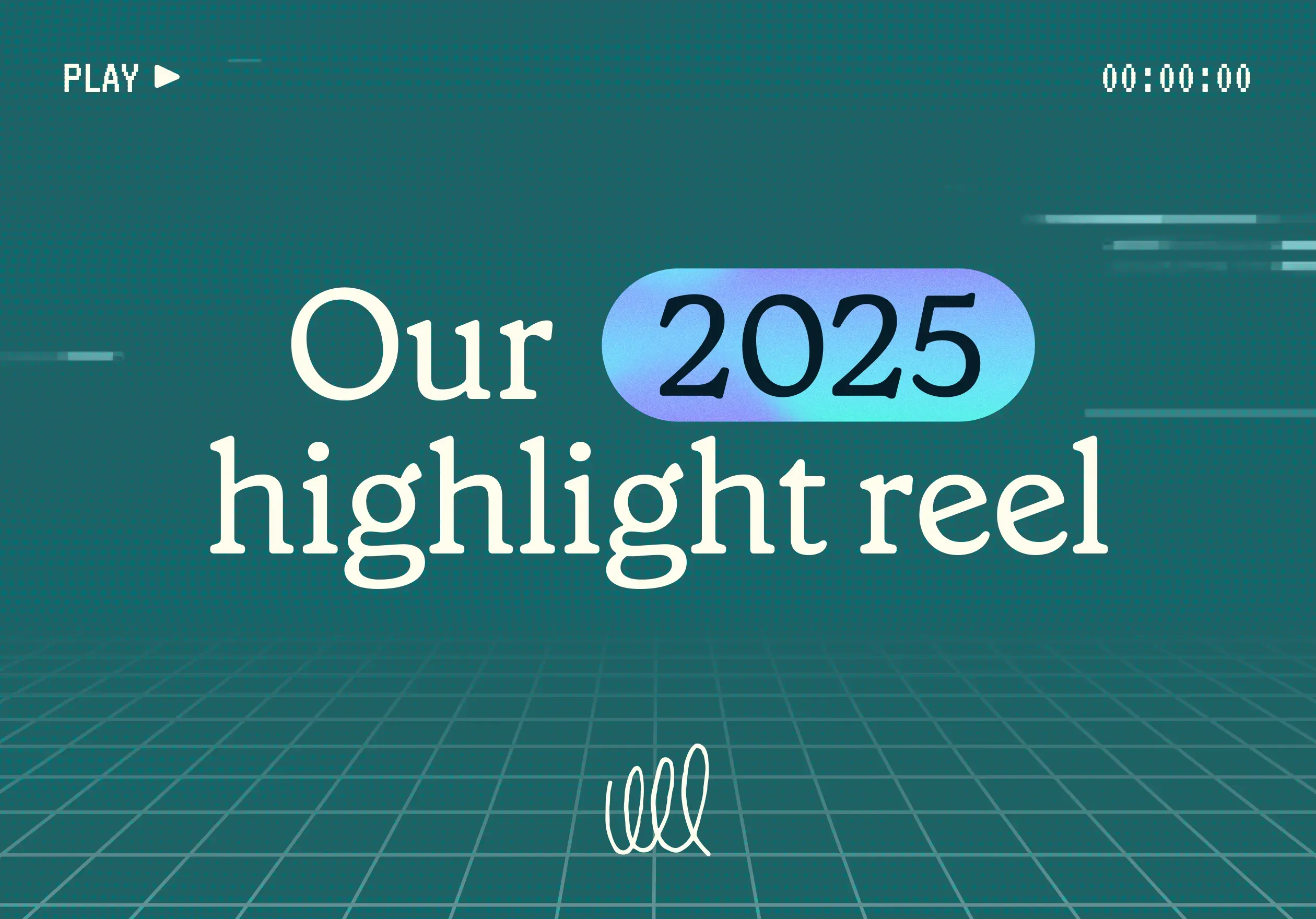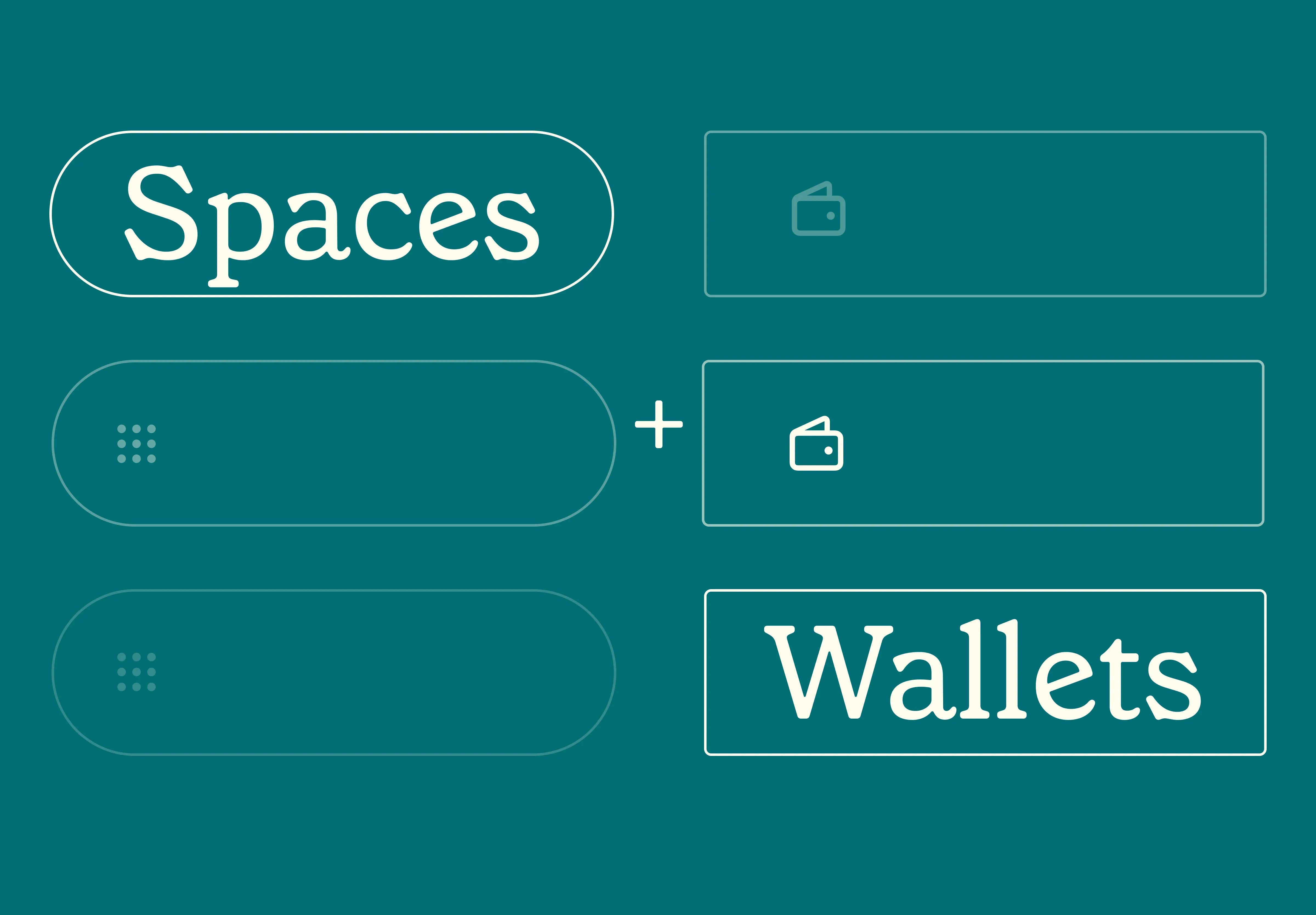24 Dec 2025
|16 min
Design thinking workshop
Learn how to run a design thinking workshop from start to finish – plan, facilitate, and execute creative problem-solving sessions that drive innovation and collaboration.

Design thinking workshops offer a collaborative and interactive approach to problem-solving that encourages creativity and innovation. But running an effective workshop requires more than just gathering people in a room and asking them to brainstorm.
As a design researcher, I've facilitated countless workshops and learned what separates productive sessions from those that fall flat. In this guide, I'll walk you through everything you need to plan, facilitate, and execute design thinking workshops that lead to real solutions – from setting clear objectives to validating ideas with actual users.
Key takeaways
Design thinking workshops combine empathy, ideation, and rapid prototyping to solve complex problems through collaborative, human-centered approaches.
Success depends on clear objectives, diverse participants, and structured activities that balance creativity with practical constraints.
The five-phase framework – empathize, define, ideate, prototype, and test – guides teams from problem discovery to validated solutions.
Tools like Lyssna help validate design decisions throughout the workshop process by enabling rapid user testing and feedback.
Test your workshop ideas with real users
Validate design concepts quickly with Lyssna's research tools. Sign up for a free plan to get started.
What is a design thinking workshop?
Design thinking workshops offer a collaborative and interactive approach to problem-solving that encourages creativity and innovation. As a design researcher, I conduct UX workshops to fill the gaps with UX training, coaching, and collaboration. These structured sessions bring together individuals from diverse backgrounds and skill sets to work towards a common goal.
Definition and key characteristics
The concept of design thinking is centered on the idea of empathizing with the end user, defining the problem, ideating potential solutions, prototyping and testing solutions, and iterating until a viable solution is found. Design thinking workshops are designed to facilitate this process in an intensive, focused environment.
What makes these workshops unique is their emphasis on:
Human-centered problem solving that prioritizes user needs.
Cross-functional collaboration bringing together different perspectives.
Rapid iteration through hands-on activities.
Visual thinking and tangible outputs.
A structured yet flexible process that encourages experimentation.
Why it matters for innovation and problem-solving
Design thinking workshops are used by companies and organizations around the world to solve complex problems and develop innovative solutions. By taking a human-centered approach to design, these workshops help make sure that products and services are truly tailored to the needs of their users, leading to greater customer satisfaction and business success.
The workshop format accelerates what might typically take weeks or months into just a few concentrated sessions. This intensity breaks down silos, builds shared understanding, and generates momentum that carries forward into implementation.

When and why to run a design thinking workshop
Understanding when to invest time and resources in a design thinking workshop can help you maximize its impact. These workshops work best when you have complex problems that benefit from diverse perspectives and rapid iteration.
Common use-cases: Product, service, process design
Design thinking workshops are versatile tools that can be applied across various contexts. You might run a workshop when:
Developing new products or services: When you need to explore user needs and rapidly prototype concepts before committing to full development.
Improving existing experiences: When customer feedback suggests pain points that require deep understanding and creative solutions.
Tackling complex organizational challenges: When cross-functional teams need to align on strategy or process improvements.
Exploring new market opportunities: When you want to validate assumptions about user needs before entering unfamiliar territory.
Building team alignment: When stakeholders need a shared understanding of users and priorities.
Benefits of running one: Creativity, alignment, and user-centricity
While there are many benefits to running design thinking workshops, there are a few in particular that I want to emphasize.
They break down silos
One of the key benefits of design thinking workshops is their ability to break down silos and promote cross-functional collaboration. By bringing together individuals from different departments or disciplines, workshops facilitate the sharing of knowledge and expertise.
Participants are encouraged to work together in multidisciplinary teams, leveraging their unique perspectives and skills to tackle complex challenges. This collaborative approach not only leads to more comprehensive and innovative solutions, but also fosters a sense of ownership and collective responsibility among team members.
They generate new ideas
Design thinking workshops also provide a safe and supportive environment for generating ideas. Participants are encouraged to suspend judgment and embrace ambiguity, creating a space where all ideas are valued and explored.
Through a series of brainstorming sessions and ideation exercises, participants can tap into their creativity and generate a wide range of ideas. These workshops also provide opportunities for rapid prototyping and iteration, allowing participants to test and refine their ideas in real-time.
They provide structure for creativity
Another important aspect of design thinking workshops is that they provide a structured framework for the creative process. This framework helps make sure that all ideas are given equal consideration and that the best solutions are identified and developed.
By following a structured process, participants can avoid getting bogged down in details or becoming too attached to a particular idea. This can help keep the focus on the big picture and make sure that the final solution is both innovative and practical.

How to plan your design thinking workshop
Preparation is key to running a successful workshop. Before bringing your team together, you'll want to clarify what you're trying to achieve, who needs to be in the room, and how you'll structure the time together.
Define objectives and success criteria
Firstly, it's crucial to establish a clear objective for your workshop. This should be specific and measurable. Participants should be able to easily understand the purpose and desired outcomes of the session, too.
Here's an example of a detailed objective: "To create detailed user personas for the target audience of a new mobile banking app, based on comprehensive user research data."
By defining a clear objective, you can guide participants towards having a focused and productive workshop. In this case, the objective of creating detailed user personas will help participants focus on understanding the key characteristics, needs, and behaviors of the app's target users. This will enable them to develop a more user-centric design strategy and enhance the overall user experience of the app.
Choose participants and roles
The right mix of participants can make or break your workshop. Aim for diversity in:
Expertise: Include people with different skill sets and knowledge areas.
Perspective: Bring together stakeholders, team members, and if possible, actual users.
Seniority: Mix decision-makers with those who understand day-to-day operations.
Thinking styles: Balance analytical thinkers with creative minds.
Consider assigning specific roles:
Role | Responsibilities | Ideal Skills |
|---|---|---|
Facilitator | Guides the process and keeps things moving | Design thinking methodologies, group facilitation |
Timekeeper | Monitors the schedule and helps maintain momentum | Assertiveness, time management |
Note-taker | Captures insights and ideas throughout | Active listening, synthesizing ability |
Participants | Everyone else actively engages in activities | Open-mindedness, collaboration |
Design agenda and activities
A comprehensive workshop agenda is a must-have. This includes defining the precise duration of the workshop, allocating ample time for each activity, and arranging the sequence of events in a coherent and logical manner.
The agenda should be structured to foster dynamic participation and active involvement from all attendees, making sure each stage of the design thinking process is covered.
Aim to integrate diverse brainstorming techniques, such as mind mapping or rapid ideation, to stimulate creativity and foster new ideas from participants. This approach can lead to innovative solutions and novel perspectives that contribute to the overall success of the workshop.

The core phases of a design thinking workshop
The design thinking process follows five distinct phases that build on each other. While you might move back and forth between phases as you learn more, understanding each stage helps you structure activities and guide participants through the journey from problem to solution.
Empathize – Understand user needs
In a design thinking workshop, participants are encouraged to put themselves in the shoes of the end-users or customers so they can gain a deeper understanding of their needs, desires, and pain points.
This empathetic approach allows teams to uncover insights and identify opportunities for improvement or innovation. By immersing themselves in the experiences of their customers, teams can develop a more holistic understanding of the problem at hand, leading to more effective and impactful solutions.
Activities in this phase might include:
Reviewing existing user research data
Mapping user journeys and pain points
Creating empathy maps
Sharing user stories and quotes
Role-playing user scenarios
Define – Frame the challenge
Once you've built empathy, it's time to synthesize what you've learned into a clear problem statement. This phase moves from "what did we observe" to "what does this mean."
The goal is to frame the challenge in a way that's:
User-centered (focused on human needs, not technology)
Specific enough to be actionable
Broad enough to allow creative solutions
Inspirational to motivate the team
A well-crafted problem statement might look like: "How might we help busy professionals manage their finances in a way that feels effortless and builds confidence?"
Ideate – Generate ideas
Another key objective of design thinking workshops is to foster creativity and ideation. Workshops provide a safe and supportive space for participants to think outside the box, challenge assumptions, and generate a wide range of ideas. Through brainstorming sessions, visualizations, and other creative techniques, teams can explore different possibilities and perspectives.
This divergent thinking helps to break free from conventional solutions and opens up new avenues for innovation. By encouraging a free flow of ideas, design thinking workshops empower teams to come up with unique and groundbreaking solutions to complex problems.
Effective ideation techniques include:
Classic brainstorming with "yes, and" thinking
Worst possible idea (to break through blocks)
Crazy 8s (rapid sketching exercise)
SCAMPER method (Substitute, Combine, Adapt, Modify, Put to other use, Eliminate, Reverse)
Prototype – Build quick models
Design thinking workshops also focus on prototyping and product iteration. Once ideas have been generated, teams are encouraged to quickly build and test prototypes of their solutions.
The key here is "quick and dirty" – prototypes should be just tangible enough to communicate the concept and gather feedback. They might be:
Paper sketches or wireframes
Cardboard models
Role-play scenarios
Storyboards
Simple click-through mockups
This iterative process allows for rapid learning and refinement, making sure that the final solution is both feasible and desirable. By embracing a fail-fast mentality, teams can quickly identify flaws or areas for improvement and make the necessary adjustments.
Test – Get feedback and iterate
This emphasis on prototyping and iteration helps to minimize risks and increase the chances of success when implementing the final solution. But you can't improve what you don't test.
The testing phase brings prototypes back to users (or user proxies within the workshop) to gather feedback. This might happen within the workshop itself or as a planned follow-up activity.
This is where tools like Lyssna become invaluable. You can quickly validate design decisions by running:
First click tests to see if users can find key features.
Five second tests to assess immediate comprehension.
Preference tests to compare different design directions.
Prototype tests to evaluate complete user flows.
The feedback gathered in testing informs the next round of iteration – and the cycle continues until you arrive at a validated solution.

Facilitation tips and best practices
Running an effective design thinking workshop requires strategic planning and careful execution. Here are some strategies that can significantly enhance the productivity and success of your workshop.
Preparing tools and materials (remote vs in-person)
For in-person workshops:
Large wall space for posting ideas and work
Sticky notes, markers, and flip charts
Timer visible to all participants
Prototype materials (paper, cardboard, tape, etc.)
A camera to document the process
For remote workshops:
Digital whiteboard tool (Miro, Mural, or FigJam)
Video conferencing with breakout room capability
Shared document for capturing ideas
Digital timer that everyone can see
Screen sharing for presentations and reviews
Regardless of format, test all technology beforehand and have backup plans ready.
Encouraging participation and avoiding groupthink
I'm a big fan of icebreakers and start each design thinking workshop with some improv activities. Improv exercises greatly increase the trust, familiarity, enthusiasm, and social skills that are needed to overcome inhibitions that often stand in the way of the creative process. I find this particularly helpful when working with cross-disciplinary teams.
To foster genuine participation:
Use silent brainstorming before group discussion
Give everyone equal airtime
Actively invite quieter participants to share
Separate idea generation from idea evaluation
Challenge assumptions and encourage "yes, and" thinking
Celebrate wild ideas alongside practical ones
Handling constraints and adapting in real-time
It's important to create a supportive and inclusive setting that promotes collaboration and transparent communication. This can be accomplished by establishing ground rules and guidelines for respectful and constructive discussions.
Implement timeboxing to allocate specific time limits for each activity, including discussions. By adhering to a structured timeline, you can make sure that the workshop stays focused and that all tasks are completed within the designated time frame.
Manage strategic discussions by allocating dedicated time for them, incorporating timeboxing to keep them focused and productive. Additionally, consider implementing periods of focused work without discussions to preserve participants' mental energy and optimize productivity.
When things don't go as planned:
Have backup activities ready if something falls flat
Be willing to adjust timing based on group energy and progress
Know when to push through discomfort and when to pivot
Watch for signs of fatigue and build in breaks
Offer clear and concise instructions for each activity so that participants understand the purpose and expectations at each stage. Actively listen to the ideas and perspectives of all participants so that you create an atmosphere of trust and empowerment within the group.

Measuring success and post-workshop follow-up
The real work of a design thinking workshop extends beyond the session itself. To make sure your workshop leads to meaningful outcomes, you need to capture what you've learned and translate it into concrete next steps.
Metrics and outcomes to track
Success looks different depending on your objectives, but consider measuring:
Category | Metrics to Track |
|---|---|
Process metrics | Number and diversity of ideas generated, participant engagement and satisfaction scores |
Output quality | Quality of insights uncovered about users, actionability of prototypes developed, alignment achieved among stakeholders, commitment to next steps |
Validation metrics | Task success rates on prototypes, time to complete key actions, user preference between concepts, comprehension of key value propositions |
You might also use tools like Lyssna to validate workshop outputs with actual users, tracking metrics like:
Task success rates on prototypes
Time to complete key actions
User preference between concepts
Comprehension of key value propositions
Turning insights into actionable next steps
The workshop doesn't end when participants leave the room. To maintain momentum:
Document everything immediately: Photograph walls, transcribe notes, and organize digital files while context is fresh.
Create a summary report that includes:
Key insights discovered
Problems defined
Solutions proposed
Prototypes created
User feedback received
Recommended next steps with owners and timelines
Schedule a follow-up session within a week to:
Review findings with a fresh perspective
Prioritize next actions
Assign ownership
Set check-in dates
Plan validation activities using research tools to test concepts with real users before investing in full development.

How Lyssna can help
Throughout the design thinking process, rapid user feedback is essential for validating assumptions and refining solutions. Lyssna streamlines this by enabling you to:
Test early concepts with five second tests to gauge initial reactions.
Validate information architecture through tree testing and card sorting.
Assess prototype usability with prototype testing.
Compare design options using preference tests.
Recruit participants from our research panel or use your own users.
Once you're ready to test your interaction flows, we're here to help validate your design decisions with real people. This means you can move from workshop outputs to user-validated solutions faster, with the confidence that comes from actual user data rather than assumptions.
Turn workshop outputs into validated solutions
Ready to test your prototypes with real users? Sign up for a free Lyssna plan and start gathering feedback today.
FAQs about design thinking workshops

Rakhi Khialani
Design researcher and facilitator
Rakhi Khialani is passionate about empowering teams through design sprints. As a design researcher and facilitator, she guides companies in crafting user-centric experiences.
You may also like these articles


Try for free today
Join over 320,000+ marketers, designers, researchers, and product leaders who use Lyssna to make data-driven decisions.
No credit card required





